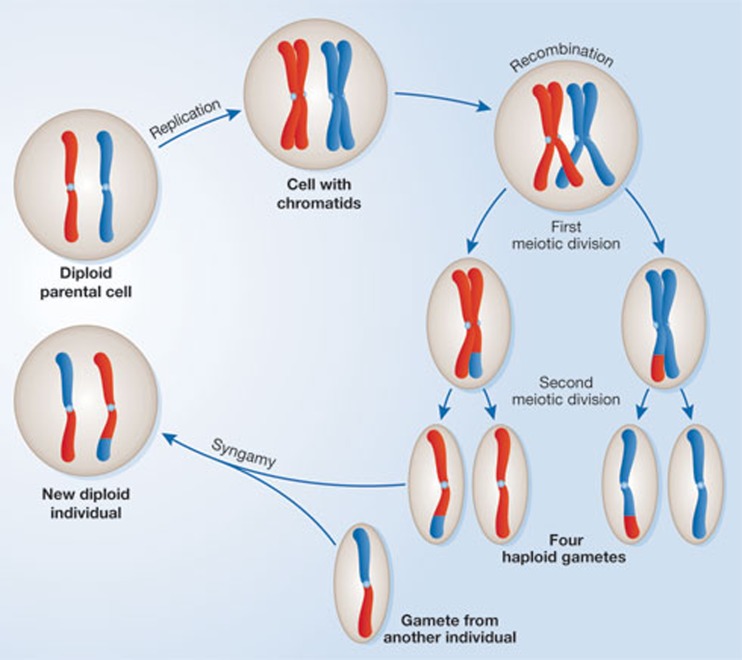Figure 1.
The core aspects of sex in eukaryotes. For simplicity, the figure shows a hypothetical organism in which the whole genome is carried in a single chromosome. The sexual cycle starts with a diploid cell that contains two different copies of the genome on a pair of homologous chromosomes. Each chromosome is first replicated to produce two genetically identical chromatids. The chromosomes then line up and exchange genetic material through recombination, producing chromatids that contain a mix of genetic material from both chromosomes. A two-stage meiotic division then leads the production of haploid gametes, each containing a single chromatid—half of the genetic material of the original diploid cell. Completion of the sexual cycle requires that diploidy is restored through the fusion of two gametes, usually from two different individuals.

